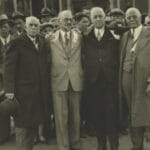The phrase “wind that bloweth” carries a rich history and symbolism, originating from biblical text and permeating various aspects of culture and thought. This article explores its origins, evolution, and enduring relevance in modern interpretations.
The Whispers of the Wind: An Ancient Phrase Unveiled
The phrase “wind that bloweth” evokes a sense of mystery and ancient wisdom. Originating in the Bible, it has resonated through centuries, appearing in hymns, poetry, and even crossword puzzles. Let’s explore the journey of this enigmatic phrase and uncover its layered meanings.
The Breath of the Divine: Biblical Origins
The phrase finds its roots in the Gospel of John, chapter 3, verse 8. In a conversation with Nicodemus, Jesus uses the wind as a metaphor for the Holy Spirit. He explains that just as the wind’s presence is felt but its origin and destination are unseen, so too is the Holy Spirit’s influence experienced without full comprehension of its workings. This comparison suggests that faith often requires acceptance of what we cannot fully grasp. Just as we trust in the wind’s continued existence, we are encouraged to have faith in the Spirit’s presence, even amidst uncertainty. Discover the interesting details about the weight of the reliquary and its religious significance.
From Sacred Texts to Puzzles: A Cultural Journey
The phrase’s transition from scripture to popular culture is remarkable. Its presence in crossword puzzles testifies to its enduring recognition, extending beyond theological circles to puzzle enthusiasts. This widespread familiarity likely contributes to its continued presence in our collective consciousness.
Echoes in Verse: Poetic Interpretations
Poets, too, have been captivated by the evocative power of the “wind that bloweth.” Authors like George MacDonald, a 19th-century Scottish poet, have linked the wind’s untamed nature to the divine will, suggesting a sense of surrender and awe in the face of the spiritual. This poetic dimension enriches the phrase’s meaning, highlighting the mysterious nature of the spiritual as a source of both comfort and wonder. Also, learn about the ancient art of throughting and its remarkable techniques.
Modern Resonance: Interpretations in the 21st Century
The phrase “wind that bloweth” continues to hold relevance in contemporary society. It speaks to timeless questions about free will versus destiny, the unpredictable course of life, and the inherent mysteries of human existence. Some may interpret it as a metaphor for societal and political change, while others might see it as a reminder of the limitations of human knowledge. The absence of a single “correct” interpretation contributes to its enduring appeal.
Embracing the Unknown: The Enduring Mystery
Ultimately, the “wind that bloweth” symbolizes forces beyond our immediate understanding, shaping our lives in both spiritual and earthly realms. It encourages us to embrace the unknown, acknowledging that some things may forever remain beyond our grasp. This acceptance can foster a deeper appreciation for the world’s beauty and wonder, encouraging faith not only in the divine but also in the very essence of mystery itself.
What do you spread on crackers with 4 letters?
This question, often found in crossword puzzles, has a few possible answers depending on what you’re looking for. While the most common answer is Pâté, let’s explore other options and dive deeper into the world of cracker spreads.
Pâté: A Classic Choice
Pâté, often made from liver or other meats, offers a rich and sometimes gamey flavor that many find delightful. Its smooth or textured consistency adds a touch of luxury to a simple cracker. Different varieties, like chicken liver or duck pâté, cater to diverse palates.
Brie: Creamy and Mild
Brie, a soft cheese, presents another 4-letter option. Its mild, buttery flavor and creamy texture make it a perfect spread for various crackers, from plain to herby. Baked brie served warm with crackers elevates this simple spread to a decadent treat.
Dips and Roe: Exploring 3-Letter Options
While technically 3-letter words, “Dip” and “Roe” offer a wider range of cracker companions. “Dip” encompasses a vast category, including hummus, guacamole, and French onion dip, each providing unique flavors and textures. “Roe,” referring to fish eggs like caviar, offers a luxurious, albeit less common, spread.
The ideal spread ultimately depends on individual preference. Whether it’s the rich savoriness of pâté, the creamy mildness of brie, or the diverse world of dips and roe, exploring these options can lead to discovering a new favorite cracker topping!
What is a dramatic opening 4 letter word?
In crossword puzzles, “dramatic opening” often clues the 4-letter word MELO, short for melodramatic. However, other possibilities exist depending on the puzzle’s context.
Beyond MELO: Exploring Alternatives
While MELO is common, ACTI, referring to the first act of a play, can also be a solution. Other 4-letter words like BANG, suggesting a sudden start, or OPEN, signifying a new beginning, might fit depending on the specific clues.
Context is Key
Deciphering the correct word relies heavily on understanding the puzzle’s context. Surrounding clues and the puzzle’s theme can provide valuable insights. Exploring synonyms like “start” or “onset” might also reveal the intended word.
The Art of Wordplay
Word puzzles don’t always have a single definitive answer. The ambiguity and interpretation involved are part of their appeal. While MELO and ACTI are likely solutions, others may exist, adding to the challenge and enjoyment of wordplay.
What verse talks about the spirit being like the wind?
John 3:8 is the key verse where Jesus compares the Holy Spirit to the wind. Speaking to Nicodemus, Jesus uses this analogy to explain the concept of spiritual rebirth, emphasizing the Spirit’s unseen yet powerful nature.
Unpacking the Analogy
The wind’s invisibility, yet evident effects, mirrors the Holy Spirit’s influence. We may not see the Spirit, but we witness its impact on lives through changed hearts and acts of kindness. The wind’s varying intensity, from gentle breeze to powerful gale, reflects the Spirit’s diverse workings, sometimes subtle, sometimes transformative.
Sovereignty and Spiritual Rebirth
Jesus highlights the wind’s sovereignty, blowing where it wills, just as the Spirit operates according to God’s plan. This analogy helps Nicodemus, and us, understand spiritual rebirth as an inner transformation, a new life initiated by the Spirit, as real as the wind’s effects, though unseen.
Breath of God: Deeper Meanings
The Greek word for “wind,” pneuma, also means “breath” or “spirit,” adding another layer of meaning. Just as breath sustains physical life, the Holy Spirit is essential for spiritual life, the very breath of God within us. Other biblical passages, like Genesis 2:7 and Ezekiel 37, further connect breath and spirit with the life-giving force of God.
While the wind analogy aids our understanding, the Holy Spirit remains a mystery, a sacred presence we experience but cannot fully comprehend. This should inspire awe and reverence for the divine that dwells within us. The next time you feel the wind, consider the Holy Spirit, the unseen force moving through the world and within our hearts, bringing life, hope, and transformation.
- Decoding Nationality Guessr: Exploring Culture, Clues, and Stereotypes - November 24, 2024
- Linesville, PA (Crawford County): A Small Town Guide to History, Nature, and Community Life - November 24, 2024
- Top Letflix Alternatives: Stream Smarter & Save in 2024 - November 24, 2024















2 thoughts on “Decoding Wind That Bloweth: From Scripture to Symbolism”
Comments are closed.